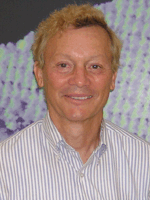Home > Press > Silicon superlattices: New waves in thermoelectricity
 |
| Max G. Lagally |
Abstract:
University of Wisconsin-Madison research team has developed a new method for using nanoscale silicon that could improve devices that convert thermal energy into electrical energy.
Silicon superlattices: New waves in thermoelectricity
Madison, WI | Posted on March 31st, 2009The team, led by Erwin W. Mueller Professor and Bascom Professor of Surface Science Max Lagally, published its findings in the March 24 issue of the journal ACS Nano.
Thermoelectric devices can use electricity to cool, or conversely convert heat to electricity. To improve efficiency in tiny thermoelectric devices, researchers build superlattices of alternating thin layers of two different semiconductor materials, called heterojunctions. Charges in multi-layer heterojunction wires travel through a periodic electric field that influences their motion; however, it is difficult to create modulation large enough to be effective with traditional heterojunctions, Lagally says.
The UW-Madison team addressed the problem by creating a superlattice from a single material: a sheet of silicon nanometers thick, called a nanomembrane, and cutting it into ribbons nanometers wide. The researchers can induce localized strain in the silicon, creating an effective strain wave that causes charges the electric field in the ribbon to vary periodically.
"Essentially we're making the equivalent of a heterojunction superlattice with one material," says Lagally, whose home department is materials science and engineering. "We're actually doing better with these strained regions than you can do easily with multiple-chemical-component systems."
The strained-silicon superlattices display greater electric field modulation than their heterojunction counterparts, so they may improve silicon thermoelectrics near or above room temperature. In addition, they are relatively easy to manufacture. Lagally and his group theorize that their method could apply to any type of semiconductor nanomembrane.
"It's cool in several ways: It's a single material, the modulation in the electric field is bigger than what others can make easily, and it's very straightforward," says Lagally.
Co-authors of the paper include Lagally, UW-Madison postdoctoral associate Hing-Huang Huang, graduate students Clark Ritz and Bozidar Novakovic, assistant scientist Frank Flack, associate scientist Don Savage, Materials Science and Engineering Associate Professor Paul Evans, and Electrical and Computer Engineering Assistant Professor Irena Knezevic, along with Decai Yu, Yu Zhang and Professor Feng Liu of the University of Utah.
The U.S. Department of Energy, the National Science Foundation and the Air Force Office of Scientific Research supported this work.
####
For more information, please click here
Copyright © University of Wisconsin-Madison
If you have a comment, please Contact us.Issuers of news releases, not 7th Wave, Inc. or Nanotechnology Now, are solely responsible for the accuracy of the content.
| Related News Press |
News and information
![]() Researchers develop molecular qubits that communicate at telecom frequencies October 3rd, 2025
Researchers develop molecular qubits that communicate at telecom frequencies October 3rd, 2025
![]() Next-generation quantum communication October 3rd, 2025
Next-generation quantum communication October 3rd, 2025
![]() "Nanoreactor" cage uses visible light for catalytic and ultra-selective cross-cycloadditions October 3rd, 2025
"Nanoreactor" cage uses visible light for catalytic and ultra-selective cross-cycloadditions October 3rd, 2025
Possible Futures
![]() Spinel-type sulfide semiconductors to operate the next-generation LEDs and solar cells For solar-cell absorbers and green-LED source October 3rd, 2025
Spinel-type sulfide semiconductors to operate the next-generation LEDs and solar cells For solar-cell absorbers and green-LED source October 3rd, 2025
Announcements
![]() Rice membrane extracts lithium from brines with greater speed, less waste October 3rd, 2025
Rice membrane extracts lithium from brines with greater speed, less waste October 3rd, 2025
![]() Researchers develop molecular qubits that communicate at telecom frequencies October 3rd, 2025
Researchers develop molecular qubits that communicate at telecom frequencies October 3rd, 2025
![]() Next-generation quantum communication October 3rd, 2025
Next-generation quantum communication October 3rd, 2025
![]() "Nanoreactor" cage uses visible light for catalytic and ultra-selective cross-cycloadditions October 3rd, 2025
"Nanoreactor" cage uses visible light for catalytic and ultra-selective cross-cycloadditions October 3rd, 2025
Energy
![]() Sensors innovations for smart lithium-based batteries: advancements, opportunities, and potential challenges August 8th, 2025
Sensors innovations for smart lithium-based batteries: advancements, opportunities, and potential challenges August 8th, 2025
![]() Simple algorithm paired with standard imaging tool could predict failure in lithium metal batteries August 8th, 2025
Simple algorithm paired with standard imaging tool could predict failure in lithium metal batteries August 8th, 2025
|
|
||
|
|
||
| The latest news from around the world, FREE | ||
|
|
||
|
|
||
| Premium Products | ||
|
|
||
|
Only the news you want to read!
Learn More |
||
|
|
||
|
Full-service, expert consulting
Learn More |
||
|
|
||








